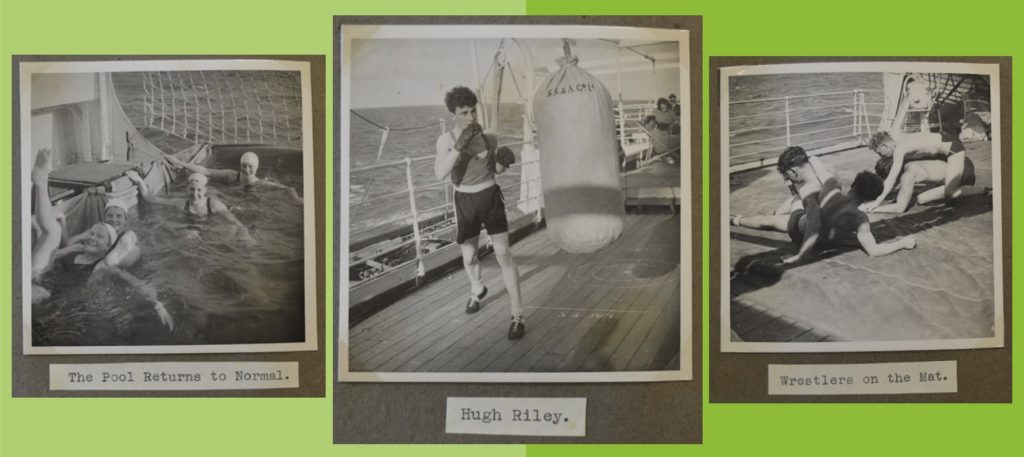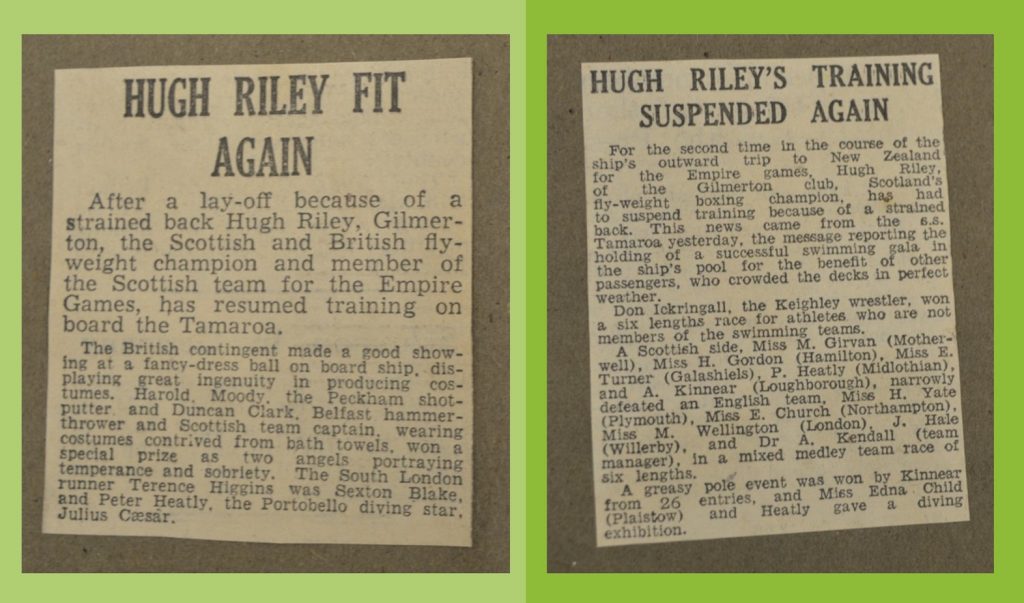Photograph album, British Empire Games, Auckland, New Zealand, 1950
Hugh Riley ended Scotland’s long twenty year wait for a Commonwealth Boxing gold, defeating K Edwin of Ceylon (Sri Lanka) in the final of the Flyweight competition. His teammate Henry Gilliland made it a memorable Games for Scotland’s boxers by adding a further gold in the Featherweight division.
The Auckland Town Hall was not nearly large enough to accommodate the crowds that wanted to view the boxing events. Those that were privileged to witness the bouts, however, were well satisfied with the sport and sportsmanship exhibited.
Scotland provided a most worthy title-winner in fly-weight Hugh Riley. He showed outstanding ringcraft and skill, allied with some excellent right-hand punching. In the final Riley met K. Edwin, the rangy Ceylonese police officer. Edwin relied largely on his long left hook. Riley, showing excellent footwork and timing, slipped inside a lot of these punches and counter-punched effectively with his right to the head – almost too fast for the eye to follow – and rips to the body. Riley’s points margin at the finish was decisive.
from The Story of the British Empire Games, Auckland 1950.
The success of the Scottish Boxing team was a remarkable achievement considering the training conditions available to the Scottish athletes en route to the Games. The team travelled on board the SS Tamora with the other British teams, the ship leaving Southampton on the 16th December 1949. The journey took over a month, travelling west across the Atlantic, through the Panama Canal, and onwards across the Pacific (the Games taking place from the 4th to 11th of February 1950). Training facilities on board were basic and opportunities for exercise were limited. Indeed Riley’s preparations for the Games were hampered by a recurring injury which was reported in the Scottish press which kept readers informed of the team’s progress.

The photograph album which records Hugh Riley’s journey to New Zealand was created by Sir Peter Heatly, a fellow athlete who competed for Scotland in the Diving competition (winning Gold at the 1950, 1954 and 1958 Games, the only Scot to achieve this remarkable record of winning gold at three successive competitions). Sir Peter’s archive of personal papers and memorabilia is held in the University of Stirling Archives, part of the larger Commonwealth Games Scotland Archive, and includes this detailed record of the journey to the 1950 Games.

The SS Tamora on which we journeyed both to and from New Zealand is a one-class ship and the team was therefore able to enjoy the greatest possible freedom of movement whilst on board. However, the cabins allocated to the men left much to be desired. Situated on B deck (the lowest on the ship) the four-berth cabins measured as little as 9 feet 6 inches by 7 feet 3 inches. The portholes in these cabins were of necessity kept shut during the greater part of the voyage to prevent the sea from entering the cabins. These factors combined to produce an atmosphere in the cabins that made it advisable to sleep on deck when passing through the tropics.
from Report on the Swimming Events at the 1950 British Empire Games, Peter Heatly